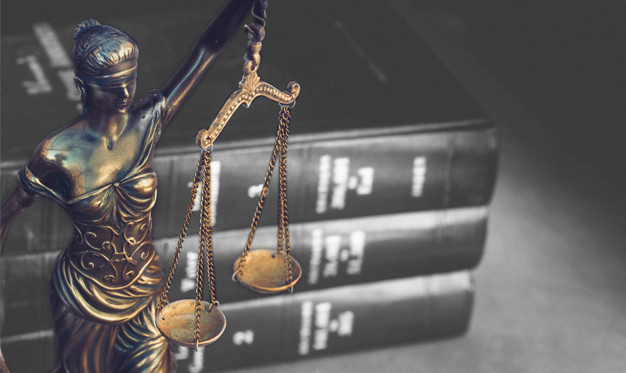In the legal and accounting professions, potential conflicts of interest can arise before or during the course of an engagement. Most firms have policies and procedures in place that govern how conflicts are identified and managed, to ensure that client and public interests are not jeopardized. However, in cases involving litigation matters, conflicts involving accounting experts can have a significant impact on your case.
This article examines conflicts of interest involving accountants, how these conflicts are evaluated, and tips for understanding how conflicts (both real and perceived) may influence your case.
Conflicts of Interest and Accounting Experts
Conflicts that arise in the accounting profession are very similar to those that occur in the legal profession. In the accounting world, conflicts frequently occur when a firm provides multiple services to the same client, such as audit, tax, forensic accounting, and bankruptcy services.
Although the national and provincial accounting bodies have provided guidance regarding how potential conflicts can be identified and managed, the manner in which they are ultimately resolved is highly subject to professional judgment. Many large accounting firms have professional standards groups that evaluate potential conflicts and determine whether an assignment should be accepted or declined. However, regardless of the determination made by the accountant, it is still important for legal counsel to understand how a particular accounting firm identifies conflicts and determines whether a conflict can be successfully managed.
Identification of Client
Drabinsky v. KPMG [1999] 41 O.R. (3d) 565 was one of the earliest cases in Canada that specifically addressed conflicts of interest involving forensic accountants.
Garth Drabinsky was an existing tax client of KPMG at the time that the accounting firm was conducting a forensic investigation designed to gather evidence against him in a fraud case. Mr. Drabinsky alleged that since he was a tax client of KPMG, the firm could not act against his interest by performing a forensic engagement where he was the target of the investigation.
The court agreed, and granted an injunction which prevented KPMG from performing the forensic engagement. KPMG was also ordered not to disclose any confidential information it may have received during the course of performing tax services, or any information collected during the forensic engagement that may have been adverse to Mr. Drabinsky’s interests.
In the above case, the issue came down to who was KPMG’s client at the time the forensic investigation took place, and what duties were owed by KPMG to this client. However, in situations where the accountants involved in the engagement provide different services to the same party, and are therefore governed by different professional standards, the identification of the client may not be as clear cut. This was demonstrated in the case R. v. Gerstein (2014 ONSC 1617).
The defendant, Mr. Gerstein, was employed as the office manager of a large corporation. It was alleged that over the course of several years, funds were misappropriated from the business and used to finance personal expenditures. The shareholders of the corporation filed criminal charges, and the Toronto Police Service (“TPS”) retained Grant Thornton to conduct an independent review of Mr. Gerstein’s personal bank and credit card accounts.
However, while Grant Thornton was performing this forensic investigation, the firm’s bankruptcy group had been acting as Mr. Gerstein’s trustee in bankruptcy. Defence counsel filed a motion to have the Grant Thornton report excluded from evidence, on the basis that as Mr. Gerstein’s trustee in bankruptcy, he believed that he was a client of Grant Thornton. As such, Grant Thornton owed Mr. Gerstein a duty of confidentiality and duty of care, which was violated when the firm accepted the forensic engagement from the Toronto Police Service.
Justice Quigley disagreed, and found that Grant Thornton was not in a conflict of interest at the time it performed its forensic review. He determined that since a trustee is court-appointed, he / she is subject to the provisions of the Bankruptcy and Insolvency Act, the terms of which do not create any specific responsibility to the bankrupt person.
A trustee’s duty is to the court and the bankrupt’s estate, and had allegations of fraud arisen during the bankruptcy process, the Grant Thornton trustee would have been required by law to conduct his own forensic investigation into Mr. Gerstein’s personal finances. Therefore, Justice Quigley concluded, “There could be no conflict in performing that responsibility since the provisions of the Bankruptcy and Insolvency Act…show that the trustee in bankruptcy could have conducted, and might have been statutorily bound to perform exactly the same action on his own and to provide the results to the TPS or the court”.
The Gerstein case demonstrates the importance of understanding the role the accountant has played in the engagement, the specific work / tasks performed, and the professional standards that govern the accountant’s work. Had Grant Thornton been engaged as Mr. Gerstein’s tax advisor (as opposed to his trustee in bankruptcy), it is clear that Mr. Gerstein would have been considered a client of the firm, which would have prevented Grant Thornton from acting against his interests in a forensic investigation.
In these situations, however, it is also important to document the individual’s understanding of the nature of the relationship between the accountant and the client. In the Gerstein case, no retainer agreement was provided outlining Grant Thornton’s role and responsibilities as the trustee in bankruptcy. This can create a misunderstanding, where an individual believes they are a client when in reality this is not the case.
Expert Independence and Objectivity
There have been very few court cases involving conflicts of interest and forensic accountants. However, a recent case, Abbott and Haliburton Company v. WBLI Chartered Accountants (2012 NSSC 210), demonstrates the inconsistency with which courts have treated such conflicts.
The plaintiff, Abbott and Haliburton Company (“A&H”), hired WBLI Chartered Accountants (“WBLI”) to prepare annual financial statements for a related party from 1995 to 2004. WBLI was later replaced by the Kentville office of Grant Thornton LLP, who was retained to prepare the 2005 annual financial statements. During this process, Grant Thornton identified significant deficiencies in the financial records resulting from WBLI’s work. As a result, A&H filed an action against WBLI for negligence.
To support their case, A&H retained the services of a forensic accountant, who was a partner in the Halifax office of Grant Thornton. In forming her opinion regarding WBLI’s alleged negligence, the partner relied on the work performed by Grant Thornton’s Kentville office, since this formed the basis, in part, for the lawsuit. WBLI sought to exclude the evidence of the partner on the basis that she was in a conflict of interest when she accepted the retainer from A&H.
Justice Pickup concluded that the partner’s evidence should be excluded. He stated, “It does not matter that she might have reached the same conclusion as her partners. It also does not matter that the work was not done contemporaneously. What matters is that a reasonable observer would see that she is constrained from providing a contrary view. A contrary view would expose her partners, and therefore herself, to the prospect of liability, regardless of whether Kentville Grant Thornton had an ongoing retainer with the plaintiffs.”
A&H filed an appeal and Justice Pickup’s decision was reversed. The Nova Scotia Court of Appeal determined that under current laws, the criteria that govern the acceptance of expert evidence do not specifically require that the expert demonstrate independence and objectivity. The only issue to be decided by the trial judge was whether the expert evidence met the criteria for admissibility under the rules of R. v. Mohan (1994 CanLII 80). Since the criteria had been met, the Court of Appeal concluded it should not be excluded, even though there were concerns about her impartiality.
As this case demonstrates, an actual or perceived conflict of interest does not necessarily mean that the accounting expert’s evidence will be excluded. Current rules governing expert evidence do not require independence, which allows expert evidence to be admitted in a case where objectivity is an issue, as long as the four criteria under R. v. Mohan have been met. However, even if this evidence is admissible at trial, the weight placed on it may be reduced, which can negate the effectiveness of the expert’s evidence on your case. It is therefore critical that legal counsel obtain an understanding of the nature of all potential conflicts that may have been identified prior to the commencement of an engagement, to allow for the proper planning of the case strategy.
Tips for Dealing with Conflicts Involving Accountants
The key to cases such as the one discussed above is to know what questions to ask and to ensure that these questions are appropriately addressed by the accountant prior to the commencement of any work. Below are some examples of questions that can be posed, whether you are retaining an accounting expert to assist you in your case or you are involved in a case where an expert has been retained by the Crown:
- Does the firm circulate a conflict check for every litigation assignment? If not, how are conflicts identified?
- If the firm circulates conflict checks on litigation assignments, ask to see a copy. Were the correct parties identified? Are there any individuals or businesses involved in the case that were omitted?
- How does the firm define what constitutes a conflict?
- If a potential conflict is identified, what steps are taken by the firm to determine whether the engagement is accepted? Are these steps documented?
- Does the firm have a professional standards group or engagement acceptance committee? What role does this group play in terms of identifying conflicts, evaluating conflicts, and / or determining which assignments can be accepted?
- How does the firm manage conflicts? If mechanisms such as Chinese Walls and Cones of Silence are utilized, are these in place at all times? Or are they instituted only once a conflict has been identified?
- Is the effectiveness of Chinese Walls and Cones of Silence monitored throughout the course of the engagement?
- If multiple parties are involved in the case, was informed consent obtained prior to accepting the engagement? Was the information provided to each party documented? Was the same information provided to each party?
- Prepare a timeline of events, and identify when the conflict was identified, when the relevant parties were notified, when consent was obtained to accept the engagement, and when the accountant commenced his / her work.
- Examine file notes and develop an understanding of the accounting expert’s thought process / analysis of the conflict, as well as how it was managed.
- Does the accounting expert monitor the existence of conflicts only at the onset of the engagement, or is a search performed periodically during the course of the engagement?
Conclusion
As discussed above, conflicts of interest can create serious issues in litigation matters. It is important to ensure you understand how the forensic accountant identifies conflicts and to distinguish between the determination that no conflict exists, versus a potential conflict that has been identified but is being managed through various mechanisms / techniques such as Chinese Walls and Cones of Silence. This is a critical distinction since the possibility of a conflict does not necessarily indicate a conflict truly exists. Although professional standards provide some guidance in terms of how to identify and manage conflicts, it is still highly subject to professional judgment, and the facts must be evaluated on a case-by-case basis.
Published in March 2015 edition of The Advocates’ Journal.
The statements or comments contained within this article are based on the author’s own knowledge and experience and do not necessarily represent those of the firm, other partners, our clients, or other business partners.










